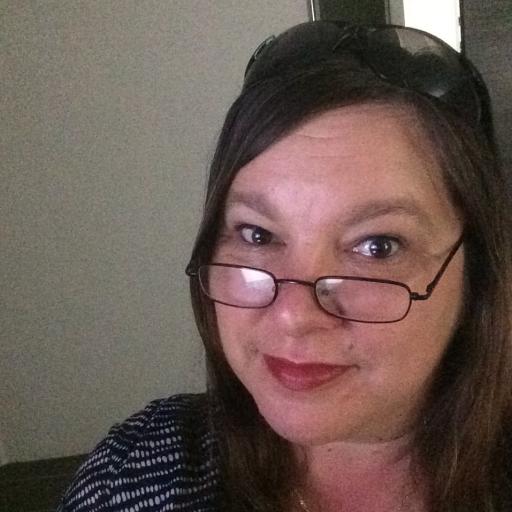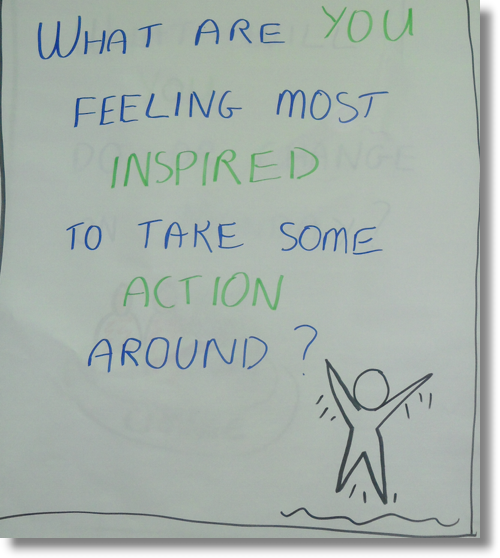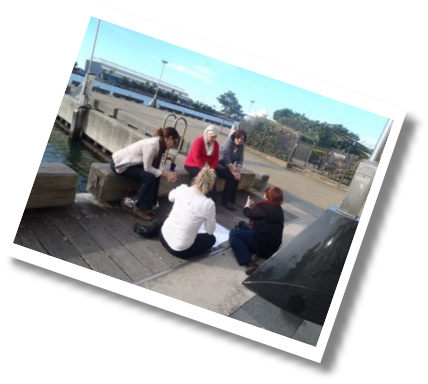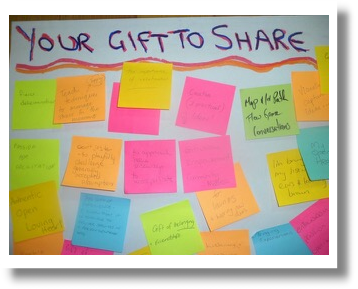
State or Province:
country:
what are your gifts and talents?:
why do you want to join abcd in action?:
Connect! Don’t Collect! : The Art of Community Mapping
The following is an actual conversation I had with the Manager of a medium sized organisation in 2008 after I had delivered anAsset-based Community-driven(ABCD) keynote presentation at a national conference in Brisbane:
Manager, We tried that asset mapping thing! It didnt work!
I asked, Could I ask what you did and with who?
Manager, It was a staff meeting, I drew up 6 columns (one for each asset) and asked all my staff to populate the columns they filled it out and after that, nothing happened! Nothing changed for us!
They had created a directory of assets and unfortunately, this is all too common; organisations and services oftendothe workforcommunities and delivertheiroutputstocommunities.
In contrast, ABCD holds central to the principle of community empowerment so, I have also had many conversations like this:
Manager, We did some asset mapping with our community!

Me, Tell me what happened!
Manager, We showed them the framework and gave them the tools and they ran with it; theres now so much going on that we are not a part of but they come back to us if theyre stuck or need support! Its great!
GOLD!
So, what is Asset Mapping?
Within any neighbourhood or community there is an often hidden treasure trove of resources, skills and abilities. Asset mapping supports community members to discover these hidden treasures and to link into them as the foundational building blocks of gettinggood stuff done!
Following is another conversation I have had:
Community worker, Yeah, but youre looking through rose coloured glasses! Communities have real issues!
I replied, I agree and by supporting community members to find their strengths and assets, we help them find the exact things they need to address those issues
For example, a community I was supporting for many years had multiple socio-economic issues and a bad reputation. They even jokingly called themselves the derogatory names that society had labeled them with (think bogan), but they were also committed to turning that opinion around so, we embarked on a learning journey together to discover what was strong and good about their community instead of looking at what was wrong or bad.
What are community strengths and assets?
Taking the example above, we started with anAppreciative Inquirystyle conversation, which looked at:
- What has worked in the past? (exploring past successes)
- What have we already got to build on? (what resources do we have)
- How can we get more of the good stuff? (putting vision into action)
 http://jeder.com.au/wp-content/uploads/2016/05/Inspired-269x300.png 269w" />
http://jeder.com.au/wp-content/uploads/2016/05/Inspired-269x300.png 269w" />
By asking what has worked in the past, community members had the opportunity to reflect on a time when their community was unique and strong and encouraged them to share stories with each other. The story sharing was positive and transformational and provided a solid foundation on which to start exploring what they already had to build on.
The community then identified the resources and assets they had to build on by developing their own, unique asset map utilising the following 6 assets:
- Individual assets (e.g. the skills, talents, abilities and passions of community members)
- Local community groups and networks (e.g. social services clubs, mums & bubs groups, sporting clubs etc)
- Local government and non-government agencies (e.g. churches, schools, departments, neighbourhood centres etc)
- Physical assets (natural and built environment)
- Economic assets (productive work of individuals, consumer spending power, local businesses)
- Cultural assets (local stories, heritage, identity, values)
 http://jeder.com.au/wp-content/uploads/2016/05/OutdoorMapping-300x269.png 300w" />
http://jeder.com.au/wp-content/uploads/2016/05/OutdoorMapping-300x269.png 300w" />
Community members started to get very excited and realise the potential they had to support the co-production of their own well-being and there were subsequently many community-driven and community-led activities and actions that arose from the discovery of their strengths and assets.
What should we map?
In ABCD training workshops, theJeder Instituteteaches3 levels of asset mapping:
- Individual; skills and abilities
- Community; resources and connections
- Organisational; opportunities and resources

I recently facilitated a 2-day festival for a local government council in NSW where their aim was to start to break down the silos within their own walls. Over the 2 days, we had 4 sessions, each with a different focus, e.g. economic development and community engagement. We identified overlaps and looked at underpinning frameworks to support crossover; it was a dynamic festival!
Most people understood the individual and community mapping very easily but, there were light bulb moments when we looked at mapping the organisational assets of a local council and heres why; the question I pose after organisational asset identification is, How can the assets you have identified strengthen what communities are already doing?
For example, the list of organisational assets would look different to the individual and the community assets and they might look like this:
- Personnel
- Expertise
- Economic Power
- Constituents
- Networks of Connections
- Space and Facilities
- Materials and Equipment
So, how can your organisations networks of connections strengthen something thats already happening in community? Is there an introduction you can facilitate? How can your space and facilities be offered to community groups who werent successful in gaining funding (or werent after any)? Do you have materials, equipment or expertise that you could offer which willstrengthen what communities are already doing? How can doing this strengthen you as an organisation?
3 Steps to Asset Mapping
Asset mapping is a vehicle for community to identify, discover and connect with each other. Its not the only strategy to empower communities but it is more than a tool; it connects people through the sharing of stories and the identification of mutual strengths. We have found there are 3 key steps to asset mapping:
- Discover the assets
- Join the assets together
- Create opportunitiesfor these assets to beproductive and powerful together
In conclusion, ABCD is committed to some guiding principles that can be covered in 4 questions, as follows:
- What functions can community residents perform by themselves?
- What functions can community residents do with some additional help from government and agencies?
- What functions must government and agencies perform on their own?
- What functions must government and agencies STOP doing?
 http://jeder.com.au/wp-content/uploads/2016/05/action-300x270.png 300w, http://jeder.com.au/wp-content/uploads/2016/05/action-300x270@2x.png 600w" />
http://jeder.com.au/wp-content/uploads/2016/05/action-300x270.png 300w, http://jeder.com.au/wp-content/uploads/2016/05/action-300x270@2x.png 600w" />
In ABCD training workshops, I emphasis that an asset map must be a living document; if you do put it on paper, dont shelve it, keep it moving through multiple hands and ask for amendments, additions and subtractions depending on the task at hand. For example, if you are supporting a community to develop an asset map around strengthening the links to the local school, put the school at the centre and map around it; dont merely create a directory of assets in 6 columns like the Manager in the opening paragraph!
Above all else, when mapping the strengths and assets of a community, make sure you connect, dont just collect!

Thanks Ron,
It came from the UK festival last year but somehow only the top 3 came through with people - Michelle and I have been using the 4 since the week after the festival! It's a powerful one!
Let me know how you go with it!
Dee...
Thanks Fasoranti,
I also believe that creating opportunity is the pivotal step towards action!
Thanks for your kinds words!
Dee...
This is a really great summary of asset mapping, Dee! Thanks for sharing your insights! I like the 4th question - what should gov't/agencies STOP doing? Gonna use that next time.